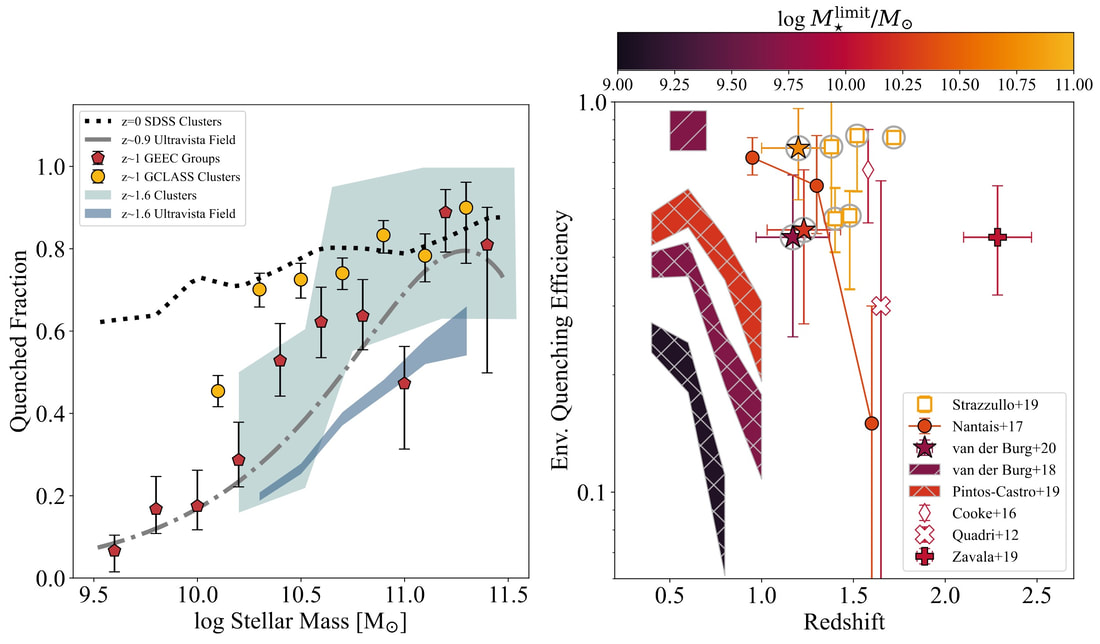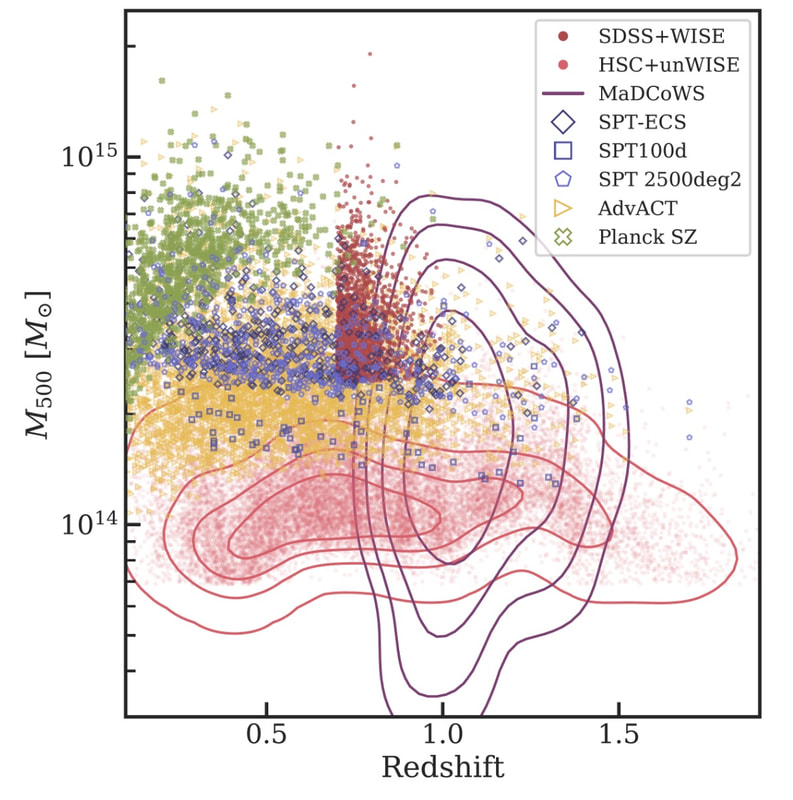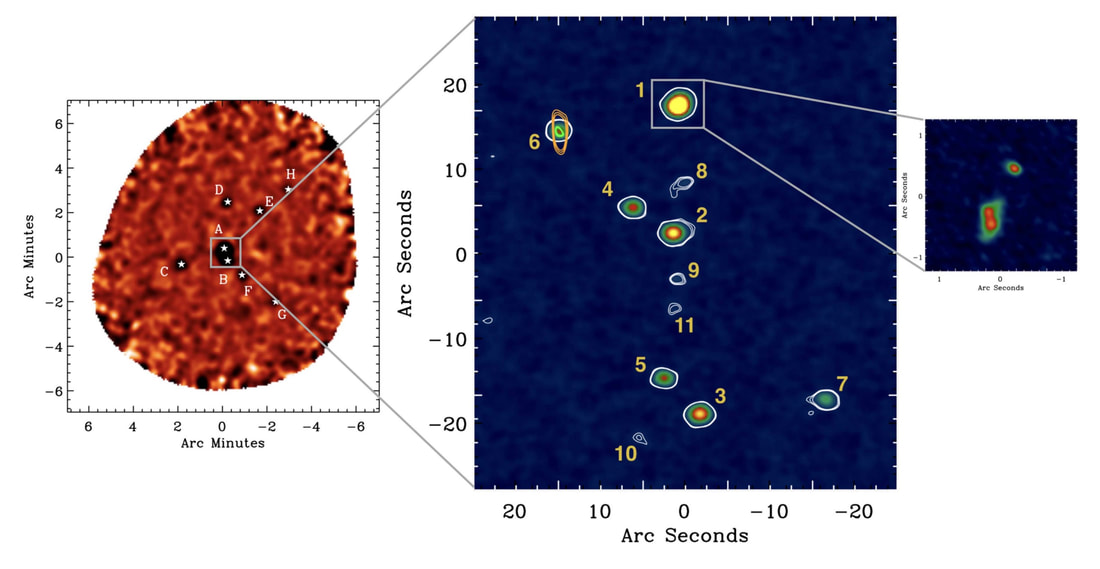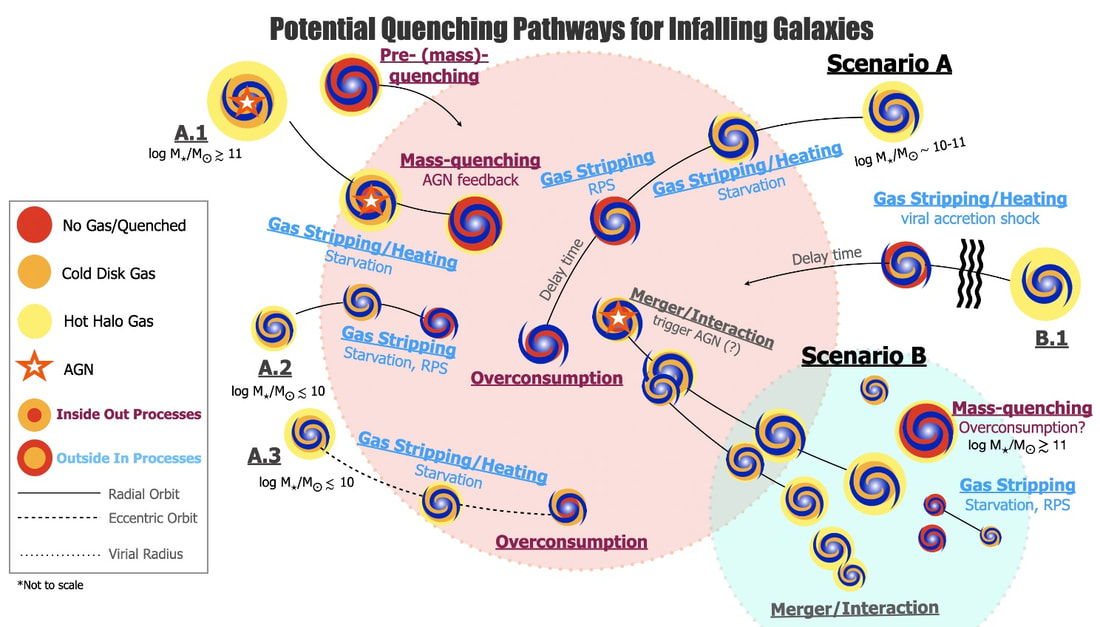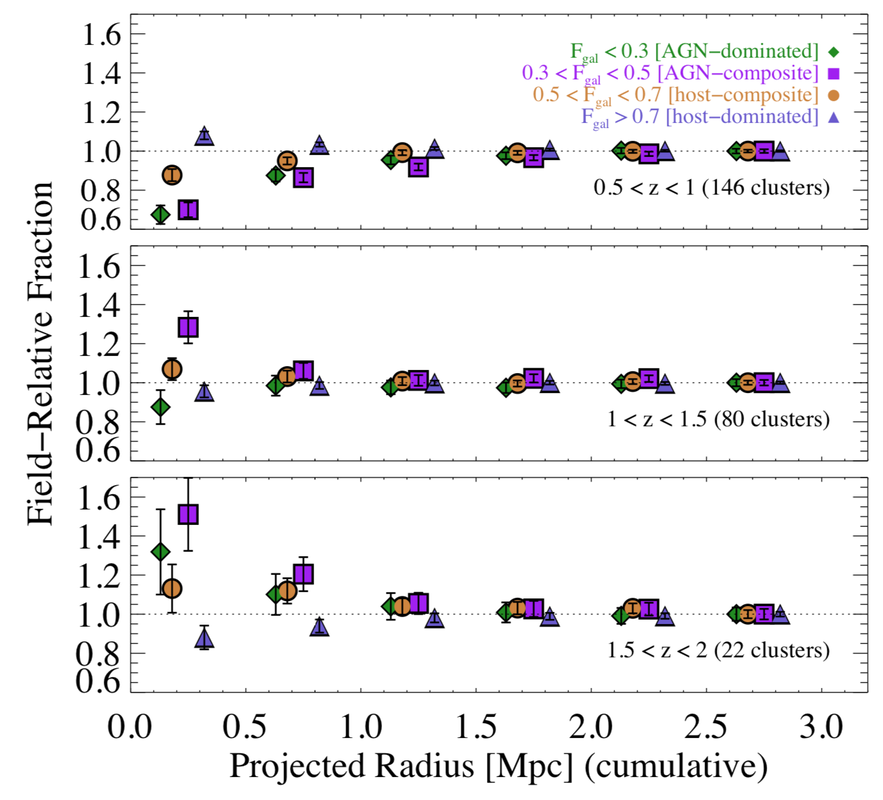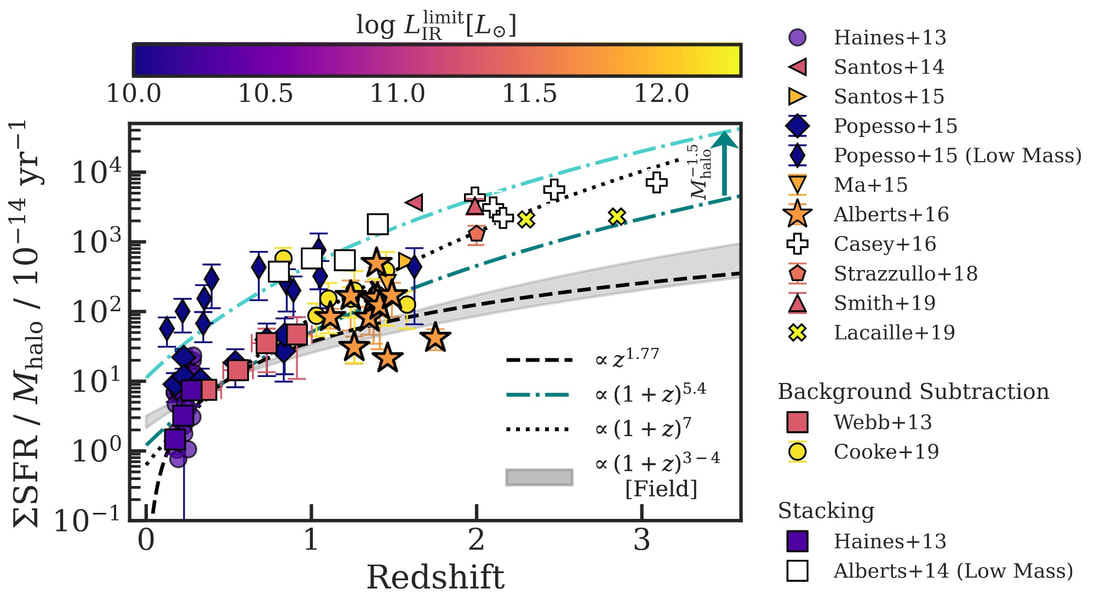A comprehensive review of the infrared contributions to environmental galaxy evolution |
Alberts & Noble 2022 is a holistic look at what we know about overdense environments, from local clusters to high-z proto-clusters, from near- to far-infrared imaging and spectroscopy. Topics covered include:
And finally, a synthesized view of quenching in overdense environments...
The epoch of star formation in massive galaxy clusters |
|
We've long known that galaxies in galaxy clusters (massive dark matter haloes that contain huge overdensities of galaxies and hot gas) live different lives than their cousins outside. They grow faster and shut down their star formation earlier, such that old, nearby galaxy clusters are full of old, red, dead galaxies.
Galaxy clusters start their lives as sprawling massive proto-clusters at high redshift (z>2) before collapsing into compact haloes. Do their galaxy population change at the proto-cluster stage or do they need the compact environment of the cluster? Using Herschel SPIRE imaging at 250μm, we studied the obscured star formation in mass-limited galaxy populations in 274 massive clusters spanning z=0.3-1.5. We found that while cluster galaxies have a more rapid evolution then field galaxies (as expected), at the highest redshifts (z~1.5), cluster galaxies have similar SFRs and specific-SFRs as field galaxies. This activity demonstrates that massive (virialized) clusters can still host significant star formation right into their cores, followed by a transition era to quenched populations. Read more: Alberts et al. 2014, MNRAS, 437, 437 The fraction of AGN as a function of cluster radius, normalized to the field level. At the highest redshifts (bottom panel), AGN-dominated and AGN-composite galaxies are found in excess of what is expected in the field, suggesting environmental triggering.
|
The total star formation activity per halo mass for (proto-)clusters with infrared observations across the literature (Alberts & Noble 2022).
We followed up this study with targeted ultra-deep Herschel PACS imaging at 100 and 160μm to look at 11 massive clusters in detail. We found significant variation between the clusters (indicating the importance of statistical cluster studies), but with the same trend toward field-like star formation activity in the cluster cores at z~1.4. The evolution in the star formation activity in these suggests a rapid quenching mechanism at z~1.4 (perhaps mergers and AGN activity) followed by less rapid mechanisms taking over (perhaps gas stripping). Building on this, we revisited our full cluster sample and analysed the mass-limited galaxy populations for signs of AGN activity. Using SED fitting, we categorized galaxies as AGN-dominated, AGN-composite, host-composite, and host-dominated. Within the cores of the highest redshift clusters (left), we found clear signs of enhanced AGN activity. Read more: Alberts et al. 2016, ApJ, 825, 72
Directly connecting this activity to cluster galaxy quenching relied on ongoing studies of AGN feedback; however, these studies confirm that the epoch of z~1-2 is an active and important time in the lives of clusters, which must be connected to the precursor activity in proto-clusters at earlier epochs. |
